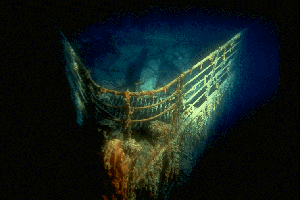
On April 15, 1912, on its maiden voyage, it collided with an iceberg and sank; 1,502 people lost their lives. Nearly 80 years later, in the summer of 1991, a high-risk Canadian-American-Russian expedition set out to explore the shipwreck and to conduct important scientific research.
Director Low weaves a dramatic story of this modern-day expedition and the legendary Titanic, the sybol of an era. Startling, eerie images of the Titanic as she now lies on the ocean floor are contrasted with the exquisitly -preserved archival photographs of the ship in all its splendour, taken in 1912. Juxtaposed to these images are the touching and eloquent comments of Eva hart who, as a seven-year-old girl, survived that tragic night but lost her father. According to Low, audiences will see the ghostly wreck in extraordinary detail. The expedition made 17 dives in tow state-of-the-art submersibles, MirI and MirII. they worked off the largest research vessel in the world, Russia's Akedmik Keldysh. Using specially-designed HMI underwater lights, the most powerful ever used under water, the expedition was able to see very large expanses of the wreck. Were it not for these lights, Titanica would not have been possible.Travel two and a half miles down to the black, frigid, watery graveyard of the Titanic.
She was once known as the "unsinkable ship," but her maiden voyage turned into an unthinkable nightmare.